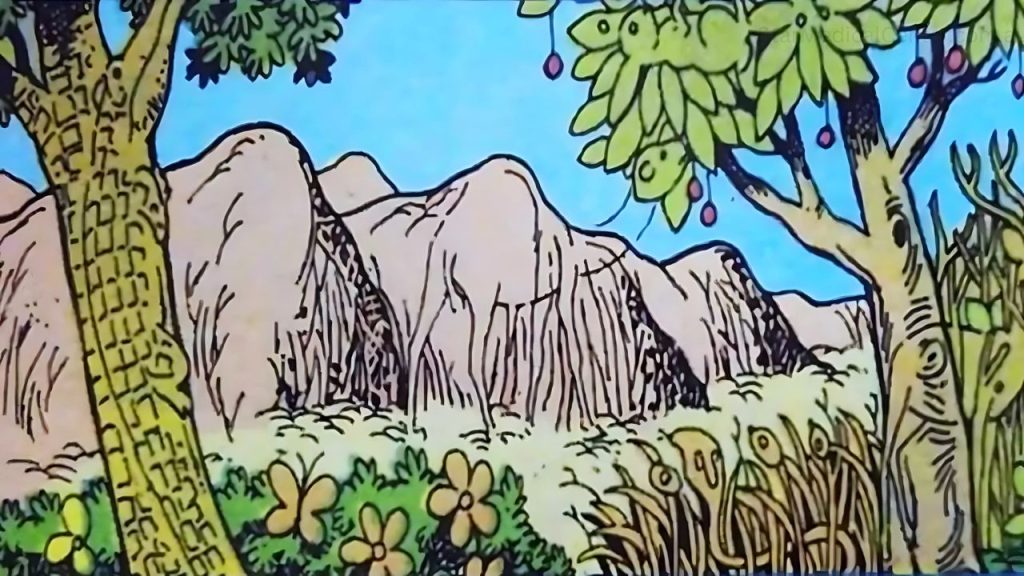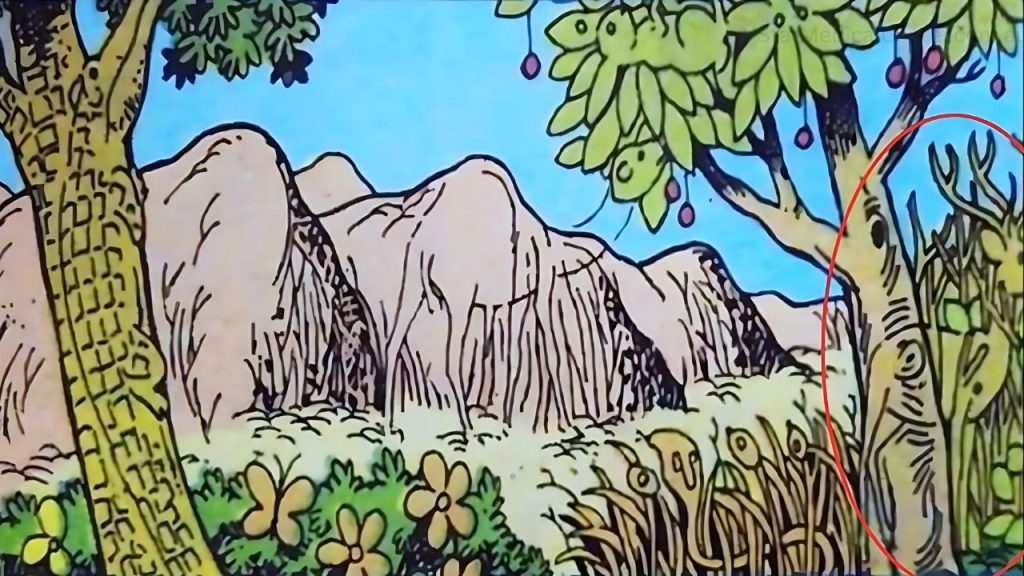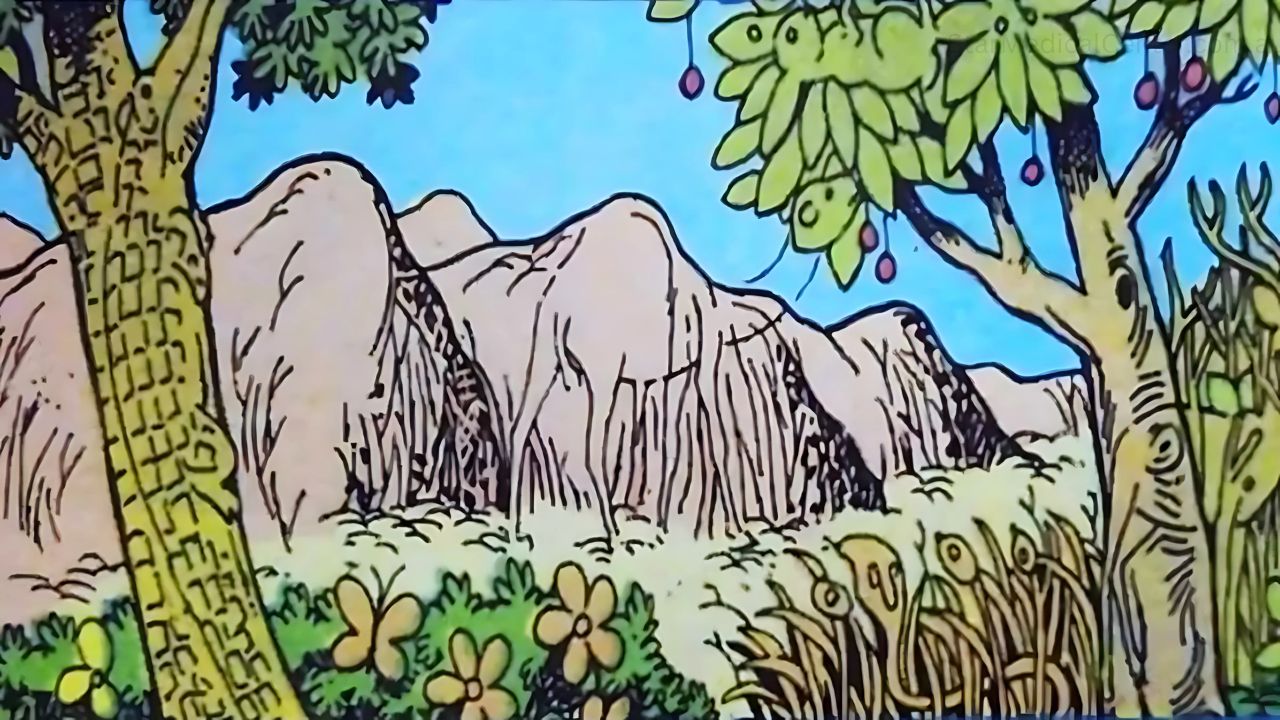The world of optical illusions fascinates almost everybody. These captivating visual puzzles mess with our perception and challenge our brains in unique ways.
Today, we’re bringing you an intriguing optical illusion from the beautiful landscapes of Australia. This particular image has been stumping viewers worldwide with its cleverly camouflaged deer.

Many optical illusions work because our brains process visual information in predictable ways. These patterns can be exploited to create images that trick our perception.
The challenge here seems straightforward—find the deer hidden within the image. However, the time constraint of just 7 seconds makes this seemingly simple task quite difficult.
Why Optical Illusions Fascinate Us
Optical illusions have captivated human interest for centuries. They represent the fascinating disconnect between what our eyes see and how our brain interprets that information.
Scientists believe that optical illusions provide valuable insights into how our visual processing works. They reveal the shortcuts our brains take when making sense of the world around us.
The human visual system evolved to quickly recognize patterns and potential threats. This rapid processing sometimes leads to misinterpretations when presented with cleverly designed images.
Research suggests that regular engagement with optical illusions may actually help improve cognitive functions. They force our brains to work harder and think outside conventional patterns.
The satisfaction we get from solving these visual puzzles triggers dopamine release in our brains. This creates a natural reward system that keeps us coming back for more challenges.
The Australian Deer Illusion Challenge
This particular optical illusion originated from Australia, where the photograph was taken in a densely vegetated area. The natural camouflage at work makes this challenge especially difficult.
The time constraint of 7 seconds adds significant pressure. Most viewers require considerably more time to locate the well-hidden deer in this challenging image.
Australian wildlife photographers often capture these moments of natural camouflage. Animals have evolved remarkable abilities to blend into their surroundings as a survival mechanism.
What makes this illusion particularly challenging is how the deer’s outline merges with the surrounding vegetation. The patterns and colors create a seamless blend that tricks the human eye.
The photographer who captured this image reportedly waited hours to get this perfect shot. They noticed how the deer seemed to disappear against the backdrop when viewed from certain angles.
How to Approach This Visual Puzzle
When tackling this optical illusion, try dividing the image into sections. Scan each portion methodically rather than letting your eyes wander randomly across the whole picture.
Look for unusual shapes or patterns that might break the natural flow of the vegetation. The deer’s outline, though well-camouflaged, creates subtle disruptions in the visual field.
Pay special attention to shadows and highlights. Sometimes the way light falls on an object can reveal its presence even when its coloration perfectly matches the surroundings.
Another effective strategy involves unfocusing your eyes slightly. This technique sometimes helps reveal hidden objects by reducing your focus on specific details and allowing patterns to emerge.
Remember that the deer might not be positioned as you expect. It could be partially hidden, lying down, or viewed from an unusual angle that makes recognition more challenging.
Benefits of Solving Optical Illusions
Regular practice with optical illusions like this one can improve your cognitive flexibility. This mental agility helps in problem-solving across many areas of life.
These visual challenges enhance your attention to detail. People who regularly engage with optical illusions often develop superior observational skills over time.
Studies have shown that puzzles requiring visual discrimination may help maintain brain health. They create new neural pathways and strengthen existing connections in the brain.
For children, optical illusions provide excellent developmental benefits. They encourage critical thinking and teach youngsters that appearances can be deceiving.
Even for adults, these illusions offer a momentary escape from routine thinking patterns. They remind us that perception is subjective and often influenced by context.
Did You Find the Deer?

If you managed to spot the deer within 7 seconds, congratulations! You possess extraordinary visual perception abilities that place you among a small percentage of successful viewers.
Most people require at least 15-20 seconds to locate the deer in this challenging image. Your quick success indicates exceptional pattern recognition and visual processing skills.
For those still searching, don’t worry. The deer is actually positioned in the center-right portion of the image, partially obscured by foliage. Its body blends remarkably well with the surrounding browns and greens.
The answer can be found by looking carefully at the leaves and branches. The deer’s antlers and the distinct shape of its head eventually become apparent with focused attention.
If you enjoyed this challenge, you might have a natural aptitude for roles requiring keen observation. Fields like forensic investigation, quality control, and artistic design value such visual acuity.
The Science Behind Your Success or Struggle
Your ability to quickly spot the deer (or not) relates to how your brain processes visual information. Some people naturally excel at breaking down complex visual scenes.
Research indicates that approximately 17% of viewers can find the deer within the 7-second timeframe. This places the challenge in the moderately difficult category of optical illusions.
Interestingly, people with certain types of color vision may find this challenge easier or more difficult. The subtle color distinctions play a significant role in camouflaging the deer.
Environmental factors also influence your performance. Proper lighting, minimal distractions, and screen quality all impact how quickly you might solve this visual puzzle.
Your emotional state and level of fatigue can significantly affect performance too. A relaxed, well-rested mind typically performs better on visual perception tasks.
Creating Your Own Optical Illusions
This Australian deer illusion has inspired many photography enthusiasts to seek out similar natural camouflage examples. The interplay between wildlife and the environment offers endless possibilities.
If you enjoy these challenges, consider trying to photograph similar phenomena. Early morning or late afternoon light often creates the best conditions for capturing natural camouflage.
Creating artificial optical illusions requires understanding basic principles of visual perception. Contrast, repetition, and perspective manipulation are key elements to experiment with.
Digital tools now make it easier than ever to create your own optical illusions. Simple photo editing software can help you develop fascinating visual puzzles to challenge friends and family.
Remember that the most effective optical illusions often employ simplicity. Overcomplicating the image can make the illusion less effective and the challenge less enjoyable.
Optical illusions like this hidden deer challenge from Australia provide more than just momentary entertainment. They offer fascinating insights into how our visual system works.
Whether you spotted the deer in 7 seconds or needed more time, the experience exercises important cognitive functions. Each attempt strengthens neural pathways related to visual processing.
The satisfaction of finally locating the hidden animal creates a powerful sense of accomplishment. This positive reinforcement encourages continued engagement with similar challenges.
Next time you encounter a visual puzzle, remember to approach it systematically. Divide the image into sections, look for disruptions in patterns, and consider unusual perspectives.
Most importantly, enjoy the process rather than focusing solely on the solution. The journey of discovery is where the real cognitive benefits of optical illusions are found.
So, were you able to spot the deer within 7 seconds? If not, don’t be discouraged—these illusions are designed to be challenging. Keep practicing, and your visual perception skills will improve over time.
